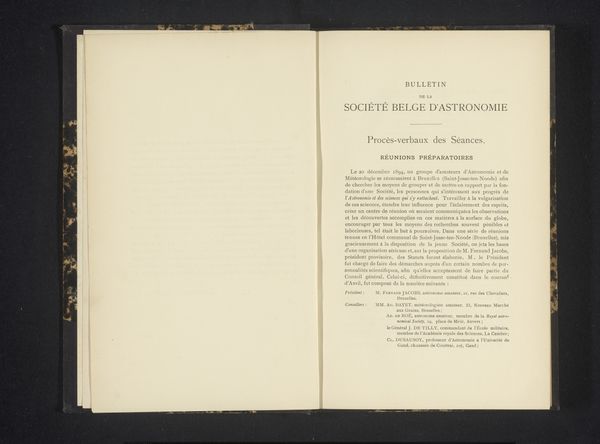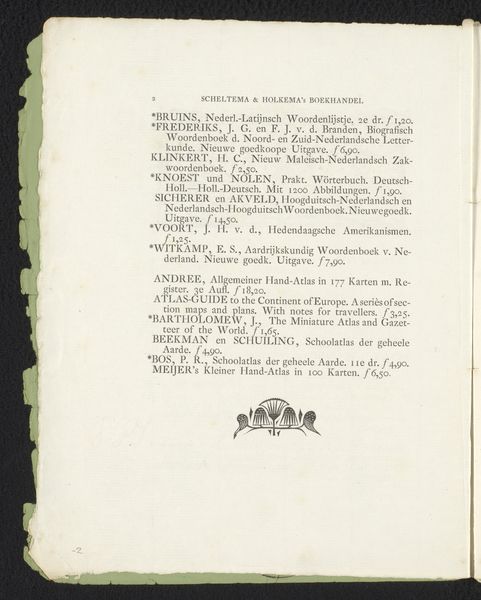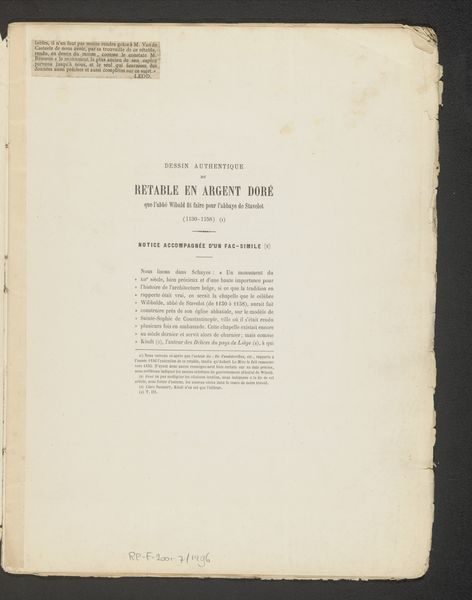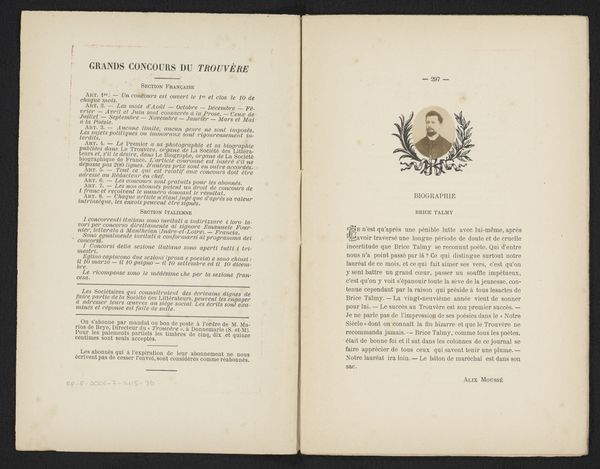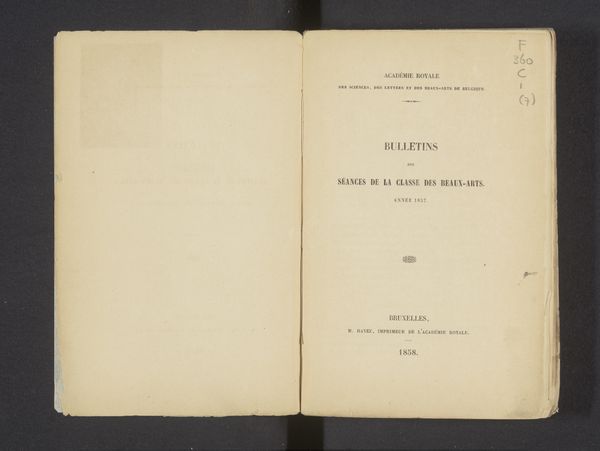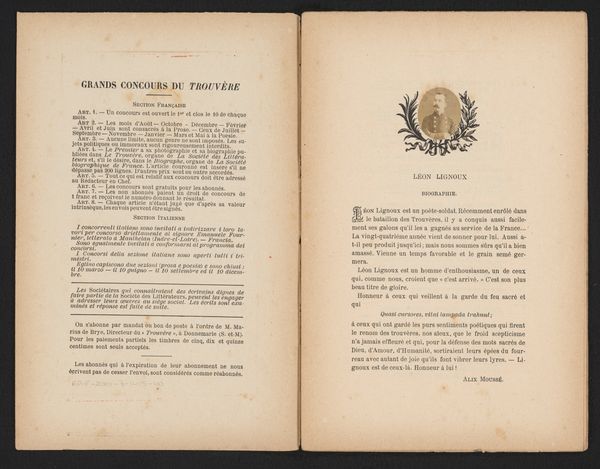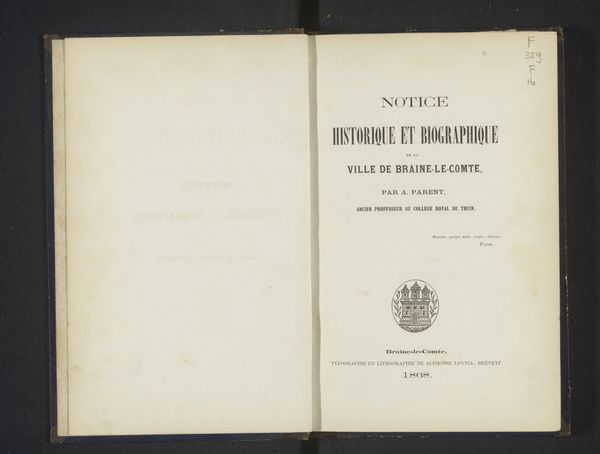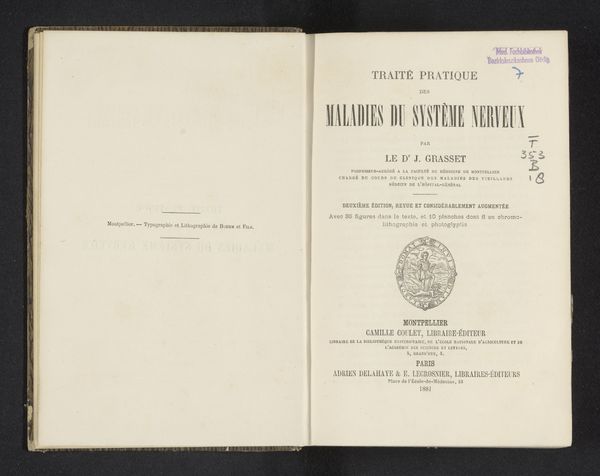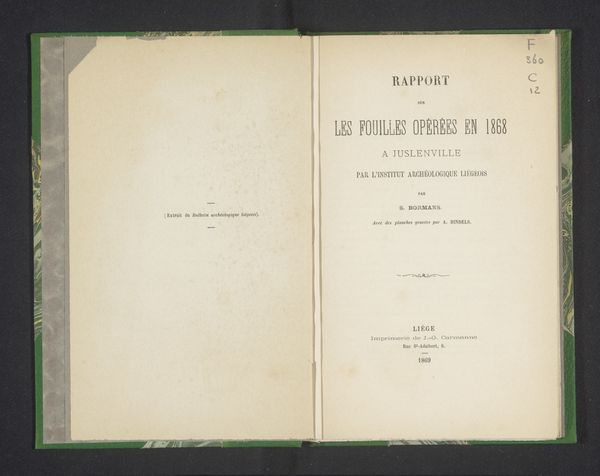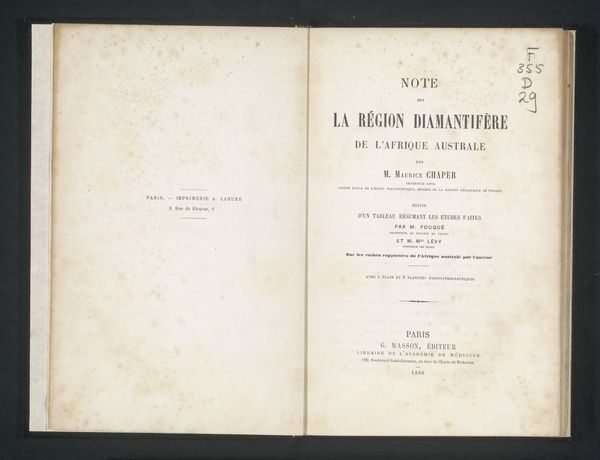
print, typography
#
portrait
# print
#
typography
#
academic-art
#
modernism
Dimensions: height 230 mm, width 159 mm, thickness 66 mm
Copyright: Rijks Museum: Open Domain
Editor: So, this is the title page from *Lessons cliniques sur les maladies mentales professées à la Salpêtrière*, dating back to 1876. It's a printed page, typography really the core medium here. The formality of the layout is striking. What can you tell me about it? Curator: Looking at this title page, I immediately consider the sociopolitical context. Salpêtrière was a famous hospital, especially known for its treatment of women deemed "hysterical". So this isn't simply a medical text. It's participating in a visual culture that shaped, and perhaps distorted, the perception of mental illness, especially for women in the 19th century. Consider the academic style in which it’s rendered, like the contents themselves, the information had to follow very strict regulations for that time. How do you feel that shapes our perception of it today? Editor: It's a very institutional look, isn't it? Legible, clear, everything in its right place. It feels like power being exerted through the very page itself, framing what is considered scientifically "legitimate". So much is in how this information is laid out, the structure of a title page from a certain kind of school in Europe… how might the choice of typography reinforce these ideas? Curator: Exactly. The typography here reinforces the image of scientific objectivity and authority. Each line is neatly centered, authoritative. And the inclusion of "avec photographies, planches lithographiques" also brings in another layer: supposedly objective visual documentation, that, combined with authoritative language creates a certain perception. Editor: It’s chilling to think how this visual framework legitimized potentially harmful practices. It also gives context to these types of works. It all felt separate but now the layers of social context gives this whole art piece a greater role. Curator: Precisely, and remember, the 'public role' of art extends even to something as seemingly straightforward as a title page. Thank you for your excellent insights!
Comments
No comments
Be the first to comment and join the conversation on the ultimate creative platform.
